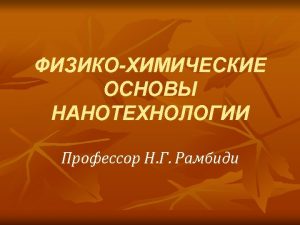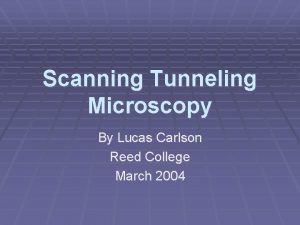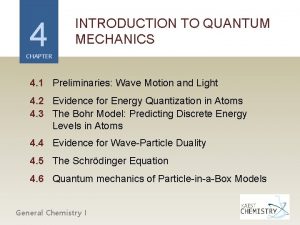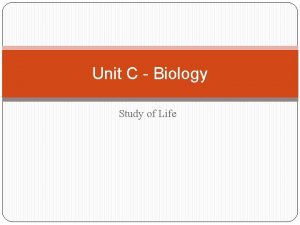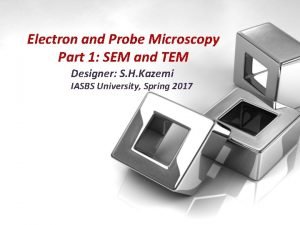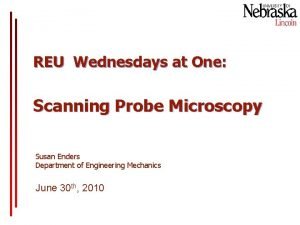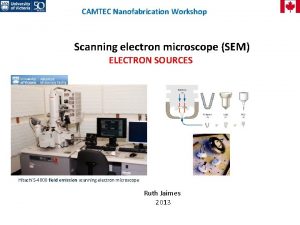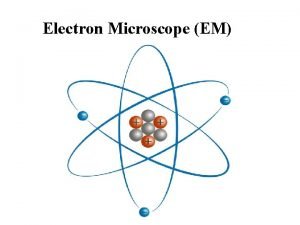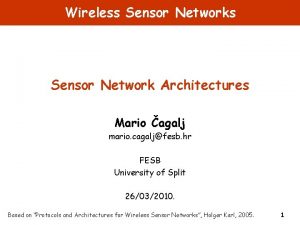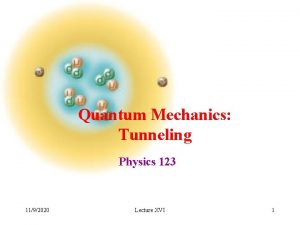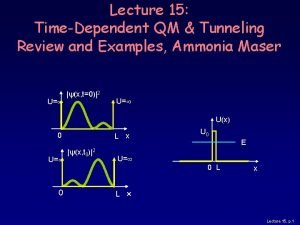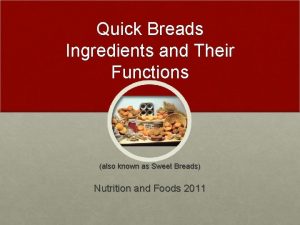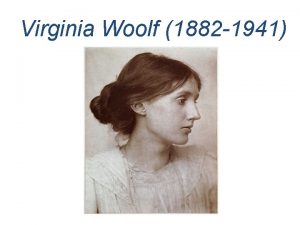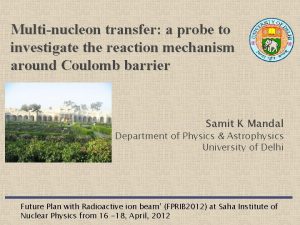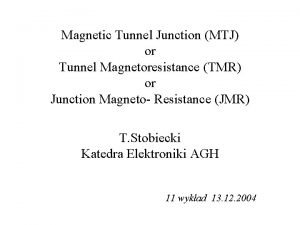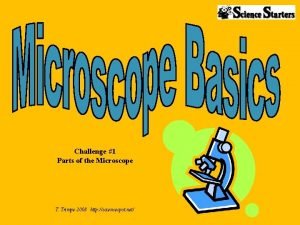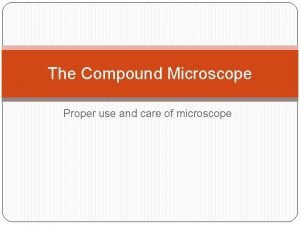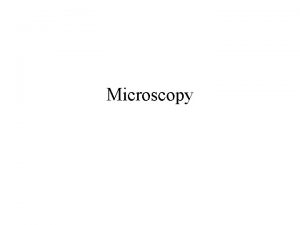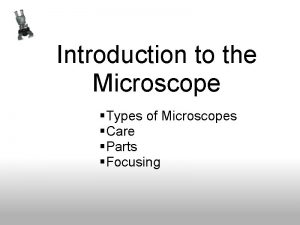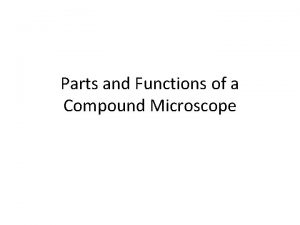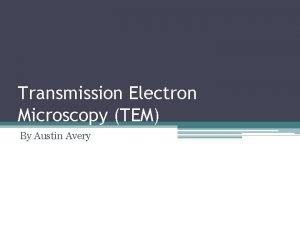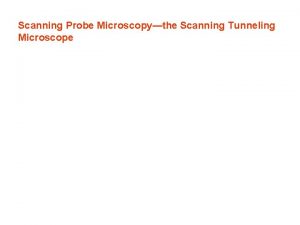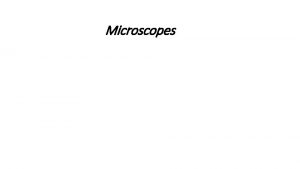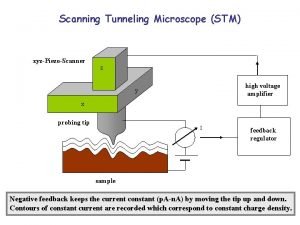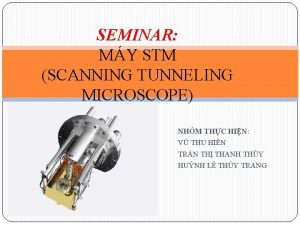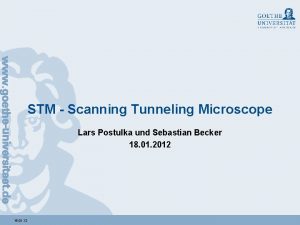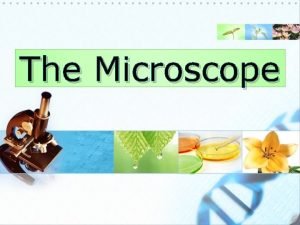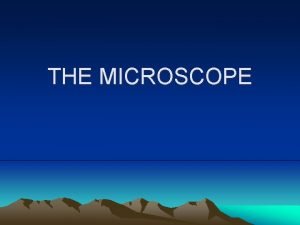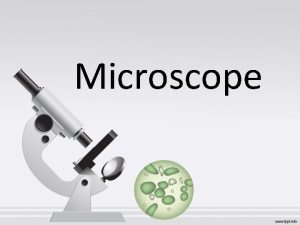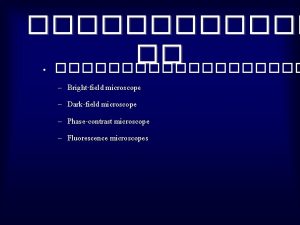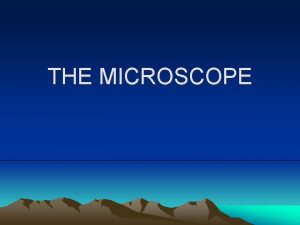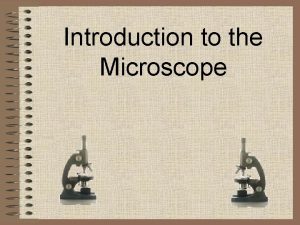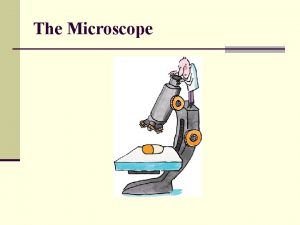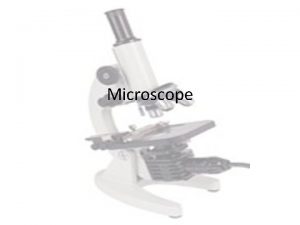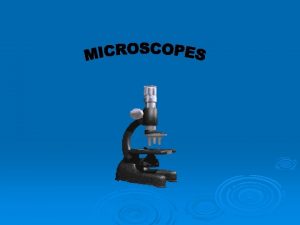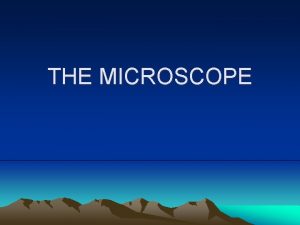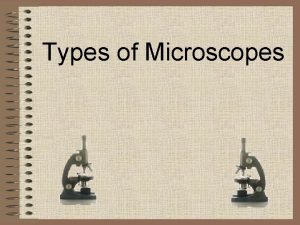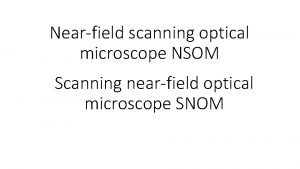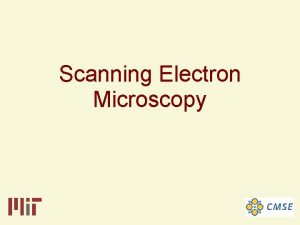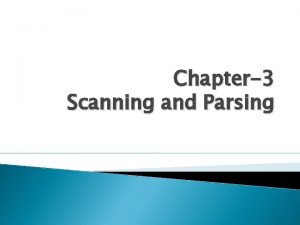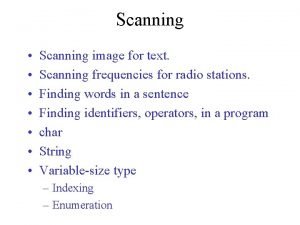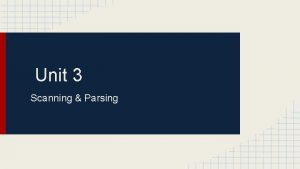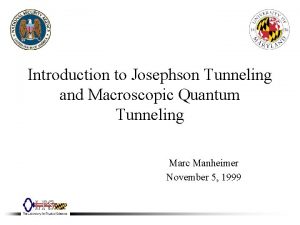Chapter 1 Chemical Foundations Scanning Tunneling Microscope Uses




























- Slides: 28

Chapter 1 Chemical Foundations

Scanning Tunneling Microscope • Uses an electron current from a tiny needle to probe the surface of a substanace STM image of graphite

Macroscopic vs. Microscopic • Macroscopic: General outlook, wide-scope view • Microscopic: Atomic/molecular view

Diatomic Molecules • Molecules that consist of two atoms • Diatomic elements: H, N, O, F, Cl, Br, I

Fundamental concepts of chemistry: • *Matter is composed of various types of atoms • *One substance changes into another by reorganizing the way the atoms are attached to each other.

Fundamental Elements of Science • Making Observations (collecting data) • Suggesting a possible explanation (formulating a hypothesis) • Doing experiments to test the possible explanation (testing the hypothesis) • AKA: Scientific Method

Scientific Method • Making observations – Qualitative: no number, Quantitative: numerical needs unit • Formulating hypotheses (possible explanations) • Performing experiments (gathers new information and produces new observations)

Scientific Models • Theory vs. Law – Observations get recorded and interpreted to make a THEORY which gives an explanation as to WHY something happened (an educated guess) – A law summarizes what happens

Units of Measurement • SI System (International System of Units) Physical Quantity Name of Unit Symbol Mass kilogram kg Length meter m Time second s Temperature kelvin k Electric Current ampere A Amount mole mol Luminous Intensity candela cd

SI Prefixes (King Henry)

Common Units • Volume: length X width X height • MASS: a measure of the resistance of an object to a change in its state of motion vs. WEIGHT: the force that gravity exerts on an object

Glassware

• The volume is read at the bottom of the liquid curve (meniscus). • If meniscus of the liquid occurs at about 20. 15 m. L. § Certain digits: 20. 15 § Uncertain digit: 20. 15

Uncertainty in Measurement • Accuracy (close to true value) vs. Precision (close to one another) • Random Error (indeterminate error): measurement has likelihood of being high OR low • Systematic Error (determinate error): measurement is always estimated in the same direction

Significant Figures • Nonzero numbers are significant • Zeros in between nonzeros ARE significant • Leftmost zeros are NOT • Rightmost zeros are IF there is a decimal point present • Exact numbers have infinite number of significant figures

Significant Figures in Math • Multiplication/Division: answer has the same as the least number of TOTAL significant figures • Addition/Subtraction: answer has the same number of decimals as the number with the least number of digits after the decimal

Scientific/Exponential Notation • ______ X 10__ – First number must be between 1 and 10 (determines significant figures) – Positive exponent shows a large number (greater than or equal to 1) – Negative exponent shows a small number (less than 1)

Rounding • When you have a multi-step problem, don’t stop midway through • 5 or more, raise the score • 4 or less, let it rest • Do NOT double round

Dimensional Analysis • Unit conversions (conversion factors) are in Appendix 6 of your textbook

Dimensional Analysis • Determine unknown (? = _____) • Determine your knowns (some given in problem, some assumed that you know - table in book) • Determine what you’re starting with (usually the number/unit given) • Use your knowns to cancel units diagonally until you arrive at your unknown unit • REMEMBER SIGNIFCANT FIGURES AND UNITS IN YOUR ANSWERS!!

Temperature Conversions • • • K = ºC + 273. 15 ºC = K - 273. 15 (ºF - 32)(5/9) = ºC ºF = ºC (9/5) + 32 ***MEMORIZE! Size of 1 K = size of 1ºC

Density • Density = Mass/Volume • Units usually g/cm 3 or g/m. L • To identify unknown substances, densities are frequently used

Matter • Definition: anything that occupies space and has mass • States: solid, liquid, gas SOLID Volume? Shape? Compress? Attraction? fixed no strong LIQUID fixed GAS fixed not fixed yes weak none

Mixtures • Mixture has variable composition – Homogeneous (aka solution): indistinguishable parts – Heterogeneous: visibly distinguishable parts • Pure Substance: has constant composition (elements and compounds - broken to elements by chemical processes)

Physical Change • Physical: phase changes, changes the form of the substance, but not its chemical composition – Distillation (separates liquid in liquid): mixture is heated and condensed back to a liquid to purify – Filtration (separates solid in liquid): Solution poured onto mesh-like material to allow liquid to pass through and solid to be left behind – Chromatography: involves a mobile (liquid or gas) and stationary phase (solid)

Paper Chromatography • Strip of filter paper (stationary phase) is used with a drop of the mixture to be separated on it • It is placed with the edge near the drop touching a liquid (mobile phase) which travels up the paper taking different parts of the mixture with it based on their affinities

Chemical Change • A given substance becomes a new substance with a new composition • Test composition before and after change. If COMPOSITION changes, it’s a chemical change.

Matter Classification Organization
 Define scanning tunneling microscope
Define scanning tunneling microscope Scanning tunneling microscope history
Scanning tunneling microscope history Scanning tunneling microscope
Scanning tunneling microscope Scanning tunneling microscope
Scanning tunneling microscope Tem vs sem
Tem vs sem Advantages of scanning probe microscopy
Advantages of scanning probe microscopy Scanning electron microscope main idea
Scanning electron microscope main idea Marvin minsky microscope
Marvin minsky microscope Wsn tunneling
Wsn tunneling Tunneling
Tunneling Qm tunneling
Qm tunneling Quick bread ingredients functions
Quick bread ingredients functions Denis bardin
Denis bardin Vpn tunneling
Vpn tunneling Dns tunneling android
Dns tunneling android Virginia woolf (1882-1941)
Virginia woolf (1882-1941) Tunneling effect
Tunneling effect Azure application gateway vs traffic manager
Azure application gateway vs traffic manager Tunneling magnetoresistance
Tunneling magnetoresistance Light microscope vs electron microscope
Light microscope vs electron microscope Microscope mania compound light microscope
Microscope mania compound light microscope Empirical formula and molecular formula pogil
Empirical formula and molecular formula pogil Love formula in chemistry
Love formula in chemistry Chapter 18 chemical reactions balancing chemical equations
Chapter 18 chemical reactions balancing chemical equations Uses of optical microscope
Uses of optical microscope Fluorescence microscopy uses
Fluorescence microscopy uses Types of microscopes
Types of microscopes The compound light microscope parts and functions
The compound light microscope parts and functions Uses of electron microscope
Uses of electron microscope
